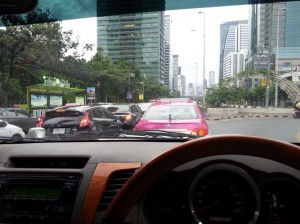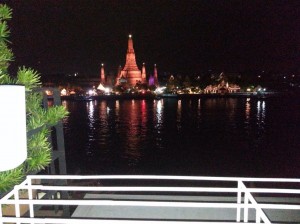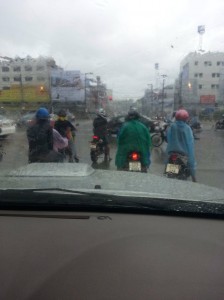Sorry Everyone for the late post! I’ve been waiting on my camera back from immigration- little did I know that if you return to the United States through a designated “target country” (whatever that means) you need to be able to turn on your electronic equipment or it will be confiscated. Well- my camera wasn’t charged, so they took it. A little over a month later they finally have returned it! Below is my update from the past two months. Enjoy!
Over the past month, I’ve continued to develop a better understanding of the Thai culture and how it has influenced the way in which transportation systems have formed within the country. Seeing the collectivist nature of the society inspired me to attempt to tailor my recommendations to fit this mindset. While it wasn’t readily apparent how I could infuse elements of collectivism within transportation infrastructure, I had the opportunity to spend 3 weeks in Bangkok analyzing their highly developed public transportation system which afforded me many answers to my new research question.

In Bangkok,The MRT system, their underground train, and the BTS system, the above ground unit, are used quite regularly by both hi-so(high society) people and by low income workers. The government subsidizes public transportation for those who cannot afford it so it is truly a system that is available to all. Unlike in New York where it is rare to speak to strangers on the subway, the MRT and BTS systems function as discursive spaces in which people from different backgrounds interact as equals. People oftentimes discuss the news that plays throughout the train, the style of clothing they’re wearing, and many other basic daily topics. It’s readily apparent that the BTS and MRT serve to give a slight respite from the overarching political control that the military keeps over the Thai population. It’s one of the few places you hear people speaking openly about government in public. The “free space” made me realize how important it is to create a transportation network in Chiang Mai that allows for public discourse to occur.

For this, I’ve altered my plan significantly. Originally I was planning on improving the existing songthaew network within Chiang Mai. Instead, I would like to provide a larger mode of transportation to inspire similar discourse that occurs within the Bangkok MRT and BTS systems. The social equalizing force that such a public transportation system affords is vital to a culture that usually operates and thrives on cultural and class difference. In those moments of equality on a public transportation system, the classist walls break down and free political discourse occurs- something that is very important for a country experiencing such rapid political change.

Since Arriving back in the United States, I’ve continued to research more into various theories of public discourse and how those theories view the formation of the self and self identity. One key text I’ve looked into is The Socialist Alteration of Man by Vygotsky. In this work he posits that the duality between the self and the public doesn’t really exist, and that we are merely individualized entities of a broader, generalized public existence. In reading this, I began to thing of public transportation as being more than just a means of getting around- instead it transformed into a formative space in which, as I’ve discussed in the previous paragraph, common social values can be established.

